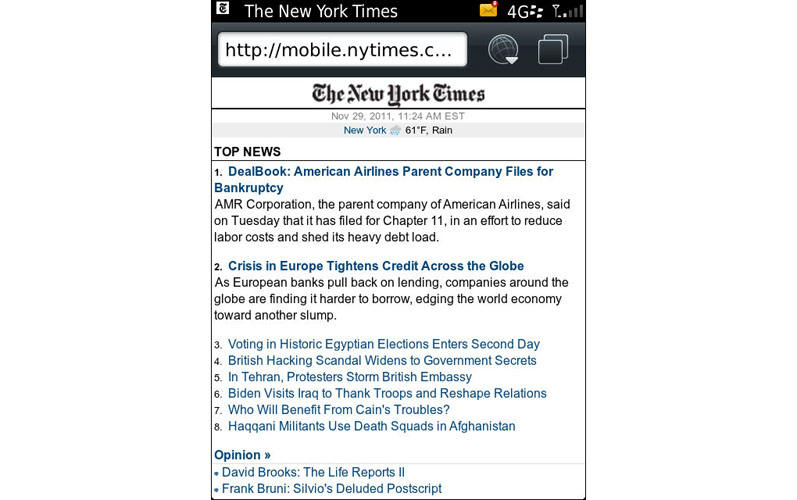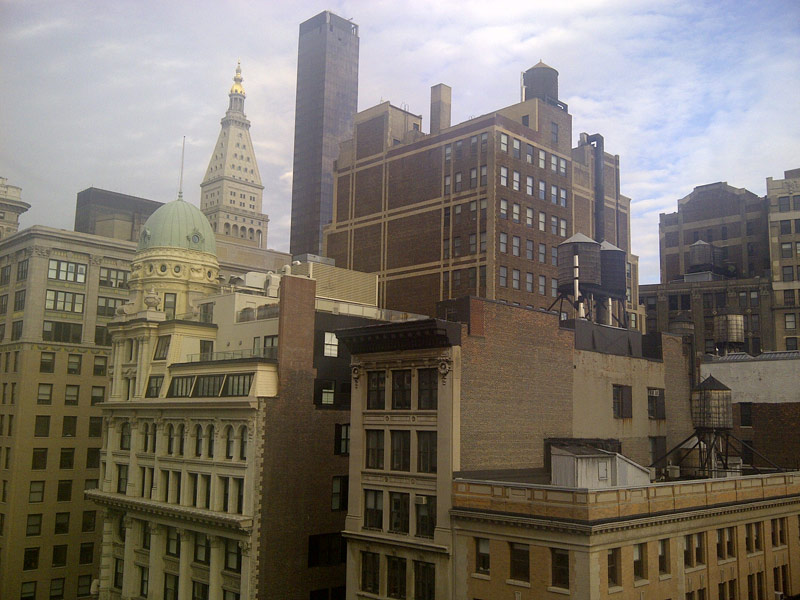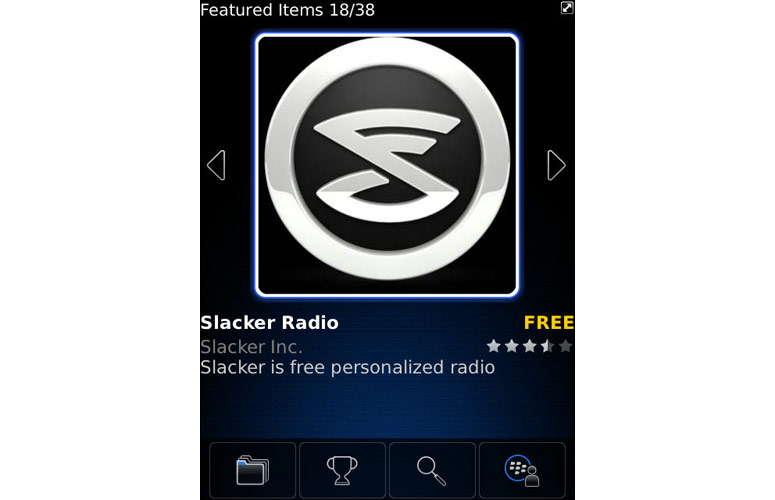Laptop Mag Verdict
A vivid touch screen and quick web browsing make the BlackBerry Torch 9810 one of RIM's best phones yet, but it's too pricey.
Pros
- +
Attractive design
- +
Bright, vivid display
- +
Better data speeds than other BlackBerrys
- +
Loud speaker
Cons
- -
Expensive
- -
Limited app selection
- -
Touch keyboard is cramped in portrait mode
Why you can trust Laptop Mag
Why mess with what was once a good thing? That seems to be the thinking behind the BlackBerry Torch 9810. An update to the Torch 9800, the 9810 looks nearly identical to its predecessor from last year, but features a new operating system, a higher-powered processor, and access to T-Mobile's 4G network. But is that enough to draw consumers to this $249 device?
Design
Click to EnlargeRight off the bat, the Torch 9810's design--although nearly identical to its predecessor--indicates this BlackBerry means business. The metallic gray finish, offset by black accents, manages to attract attention while maintaining a quiet professionalism. The back of the phone is an etched grid that, while occasionally slippery, is very classy. Still, this handset doesn't feel as solid, or as luxurious, as the Bold 9900.
A 3.2-inch touchscreen display slides out to reveal a physical QWERTY keyboard. At 5.7 ounces, the Torch is up there in weight with much larger smartphones, such as the HTC Rezound (6 ounces) and the Droid Bionic (5.6 ounces). However, its shorter 4.4 x 2.4-inch stature (when closed) makes the device feel great in the hand, and it fits comfortably in a pocket. The hefty but responsive sliding screen ensures that those want to use the physical keypad can flip it open without much effort.
Click to EnlargeRIM keeps things simple around the edges of the Torch. The right side houses two rubberized volume buttons along with a camera launch/shutter key. A lone microUSB port is on the left. Lock and mute buttons line the top of the phone. Around back is a 5-megapixel camera and flash, along with an easy-to-remove battery cover. Underneath this you'll find a microSD card slot you can swap out without removing the battery first--the way it should be.
Keyboards
Click to EnlargeHaving an on-screen as well as a physical keyboard on the Torch 9810 seemed redundant at first. However, we quickly found ourselves switching keypads based on the situation. Surfing the web and shooting quick texts were simplified with the touch-screen keyboard, but when it came to drafting lengthy messages or editing text, the optical trackpad and physical keyboard proved more efficient.
The keys on the Torch 9810's physical keyboard were comfortable to press, and we made very few mistakes when entering URLs, texting, and making notes. Though the angled curvature and lower height of the keys provide a slightly different feel than on other BlackBerrys, it worked well.
Click to EnlargeThe touch keyboard wasn't quite as effective. The keys are quite narrow when the phone is in portrait mode, so we were much more likely to make typos. We found it easiest to type in landscape mode.
Display
One of our main complaints with the Torch 9800 was its low-quality 480 x 360 screen. RIM granted our wish for more detail, as it boosted the resolution on the 9810 to 640 x 480 pixels. While this panel is no match for the Super AMOLED Plus display on the Galaxy S II, the screen was bright, vibrant, and crystal clear. Text on web pages was easily visible, and the screen was easy to read outdoors on a fairly sunny day.
Specs and Performance
Perhaps the biggest improvement made to the Torch series is the 9810's 1.2-GHz processor, a big step up from the original 624-MHz processor in the 9800. With the additional processing power, the 9810 ran quickly and smooth. Flipping through the interface was seamless, and the device was quick to load videos. Unlike with other BlackBerry devices, there was no frame-by-frame movement when loading apps, and multitasking with several applications open was smooth.
The Torch also boosted its memory capacity, including 8GB of installed memory as well as 768MB of RAM, as opposed to the 512MB of RAM in the 9800. The microSD slot can increase the storage by an additional 32GB.
BlackBerry 7 OS
For BlackBerry users who grew up using a Bold or Curve, RIM's new BlackBerry 7 OS is certainly a breath of fresh air. That being said, it's not a huge change from the 6 OS used in the 9800. When it comes to interface and design, the two are quite similar, but the new OS, aided by Liquid Graphics technology, provides a much-needed speed boost that helps this device zip along like a touch-screen device should. And it looks great, too: The display is brilliantly colored and icons seem to hover just below your fingers.
Click to EnlargeThe home screen on 7 OS is clear, uncluttered, and quite attractive. There are four other sections: Downloads, Favorites, Frequent, and Media, any of which can be disabled for an even more streamlined experience. As on the previous BlackBerry OS, a notification bar at the top of the screen brings all your updates from email, texts, and apps into one easily accessible spot. Unfortunately, this can't be accessed when outside of the home page.
The touch screen and operating system bring a lot more relevance to applications that would otherwise go unused in BlackBerry's non-touch devices. For example, the layout of the calendar app makes it possible to quickly switch from daily to monthly view, and it's much easier to pan around maps.
A more easily navigable Social Feeds feature combines updates from Facebook, MySpace, Twitter, and instant-messaging services. You can either view all of these updates on one screen, or look at them individually on separate screens and swipe through them.
While Near Field Communication is built into 7 OS, it's not available on the Torch 9810.
Web Browsing

Click to EnlargeBlackBerry doesn't have a good reputation in the web browsing department. However, the Torch 9810's quick processor combined with a faster browser make this task feel a lot less like a chore than on previous devices. The web browser doesn't support Flash, but enhanced HTML 5 video support and quick load times are a big step forward from earlier BlackBerrys. Embedded videos on blogs and Facebook profiles streamed quickly.
Otherwise, there's not much new here. Users can open multiple through an icon in the top-right corner of the browser, and with the faster interface, we actually found ourselves looking at more than one page at once. Pinching and scrolling was generally a pleasant experience, but at times zooming in didn't bring us to the center of the screen and it could be a little disorienting.
The Torch 9810 technically offers 4G speeds, but it uses T-Mobile's slowest technology at 14.4 Mbps. Other devices are rated for much higher theoretical max speeds of 21 Mbps (such as the Sidekick 4G) or 42 Mbps (such as the HTC Amaze 4G). Nevertheless, this BlackBerry beat its 3G brother, the Bold 9900. Laptopmag.com took about 30 seconds to load on the Torch 9810, while The New York Times' mobile site took about 4.5 seconds and ESPN took 9 seconds. T-Mobile's Bold 9900 clocked in with slower times of 23.5, 6.5, and 9 seconds, respectively.
Email and Messaging
Click to EnlargeStill RIM's bread and butter, email and messaging on this BlackBerry was more of a pleasure than before thanks to touch-screen navigation. Setup remains a breeze; within seconds, new messages from our Gmail account were flowing into our inbox. We appreciated that we could set up instant-messaging services within the email wizard. Attachment support remains strong, and we like that the BlackBerry 7 OS renders messages with HTML, so the experience feels desktop-like. Searching our inbox was also quite fast.
The 9810 comes pre-loaded with Google Talk, Windows Live, and Yahoo for instant messaging, as well as Facebook and Twitter apps. In addition to offering email account integration, BlackBerry syncs up with BlackBerry Enterprise Server and Microsoft Exchange, making the device a continued friend to business communication.
Apps
BlackBerry AppWorld still leaves much to be desired. By last count, the store offered about 35,000 apps, which can't compete against the breadth of Apple (425,000) or Android's (200,000) libraries. Windows Phone's Marketplace stocks 40,000 apps, but Microsoft offers a much better selection of games and other apps designed for larger displays.
Preinstalled apps on the 9810 include the aforementioned messaging services, as well as professional applications such as Documents to Go, a compass, Voice Notes, and access to your phone's saved files. (See below for entertainment apps.)
Camera and Camcorder

Click to EnlargeThe Torch 9810's 5-MP camera snapped photos without lag and delivered crisp and colorful images, especially outdoors. A shot from our rooftop of the surrounding city on a sunny day faithfully captured the crisp blue color of the sky, and bright yellow taxis looked vibrant. RIM includes several scene modes to help you get the best shot, from Face Detection and Portrait to Close-up and Party. The LED flash works pretty well indoors, as long as your subject is close.
With an HD camcorder that records 720p video, capturing motion on this device fulfills a long-time dream for BlackBerry users. Our video of a street corner looked surprisingly sharp and clear, though at times movement made objects appear somewhat jagged.
The 9810 lacks a front-facing camera, however, video chatting with friends is out of the question.
Music and Video

Click to EnlargeAmong the preinstalled apps on the Torch 9810 are Amazon's MP3 store and Slacker Radio. Playback for music sounded good with headphones, and the speaker on the Torch 9810 is sufficient to bother folks a few cubicles down. Sound was pretty loud and clear, if a little tinny.
Playing music on the 9810 is an easy and straightforward process. Songs are categorized by artist, album, or genre, and creating playlists is easy with a simple touch-to-choose interface. Scrolling through the music also looks good, as the interface displays album art next to a tune.
The 9810's preinstalled YouTube app simply redirects to the site's mobile page. Video playback was smooth, and we didn't have to put up with for slow buffering times.
Call Quality and Battery Life
While voice testing got off to an inauspicious start--our initial call was dropped about a minute and half in--it proved to be an isolated incident. Overall, the Torch 9810 offered good call quality: Voices on both ends were clear, but somewhat quiet. Fortunately, this handset's loud speaker is capable of sustaining a conference call in a large office.
While we did not run a controlled battery test on the 9810, our anecdotal experience was positive. After a full charge and unplugging at noon, we surfed the web, made a few calls, and tested out most of the applications, only to lose about a quarter of battery 6 hours later.
Verdict
Click to EnlargeRIM has undoubtedly been sinking, but the Torch 9810 manages to do a lot of things well. For BlackBerry users, the Torch's quick web browsing, seamless system navigation, and high-def video will be welcome upgrades. For anyone else on an iPhone or Android device, this is old news. Plus, the $249 price for this handsets seems out of whack when you can get faster Android 4G phones with bigger and sharper screens for $150 less. If you must have the 9810, we suggest picking up the phone on AT&T, where it only costs $49. The Torch is the best BlackBerry available, but it's not the best phone for T-Mobile customers.
BlackBerry Torch 9810 Specs
| Brand | Blackberry (RIM) |
| CPU | 1.2-GHz |
| Camera Resolution | 5 MP |
| Carrier | T-Mobile |
| Company Website | http://us.blackberry.com/ |
| Data | HSPA+ |
| Display (main) | 3.2 inches/640x480 pixels |
| Form Factor | QWERTY Slider |
| GPS | Yes |
| Memory Expansion Type | microSD Card |
| Operating System | BlackBerry 7 |
| Ports | 3.5mm headphone, microUSB |
| RAM | 768MB |
| Size | 4.4 x 2.4 x 0.6-inches |
| Weight | 5.7 ounces |
| Wi-Fi | 802.11b/g/n |
